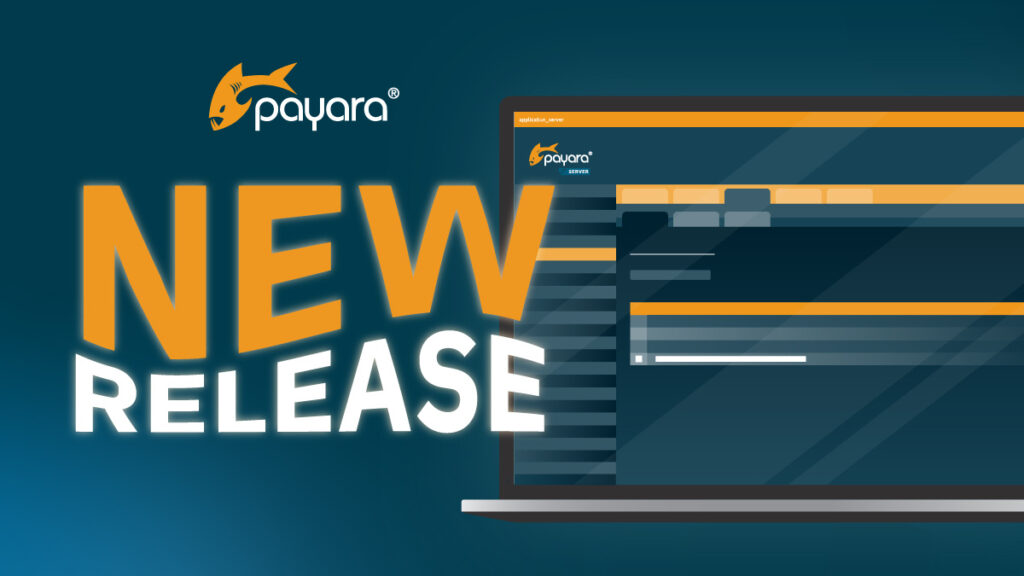 3 minutes
3 minutes
What’s New in the December 2025 Payara Platform Release?
The December 2025 releases bring targeted improvements and security updates across Payara Platform Enterprise versions 5.82.0 and 6.33.0 as […]
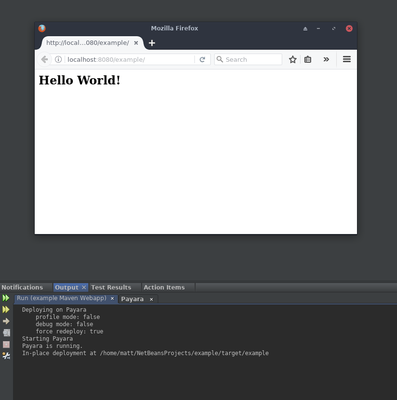
This blog uses NetBeans 11.1. If you’re using an older version, you may need to perform slightly different steps to get the same result.
When testing an app to be run on Payara Server, it can be extremely useful to be able to test your app continuously from your IDE. If you’re using NetBeans this is made very easy. Follow the steps in this blog to setup NetBeans to use Payara Server for running your web apps.
{{cta(‘9db7e8b3-2b4b-494a-a061-c7f91684544f’,’justifycenter’)}}
If you haven’t made a project to test yet, carry on to the first section of this guide. If you already have an app to run, then you can skip this section.
This first section will guide you through creating a Maven project which can be deployed to Payara Server. If you already have one in mind, you can skip to the next section.
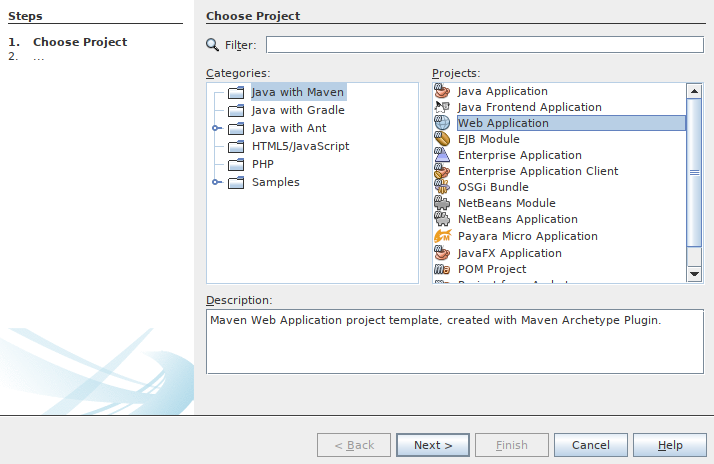 Web Application” width=”734″ style=”width: 734px;”>
Web Application” width=”734″ style=”width: 734px;”>
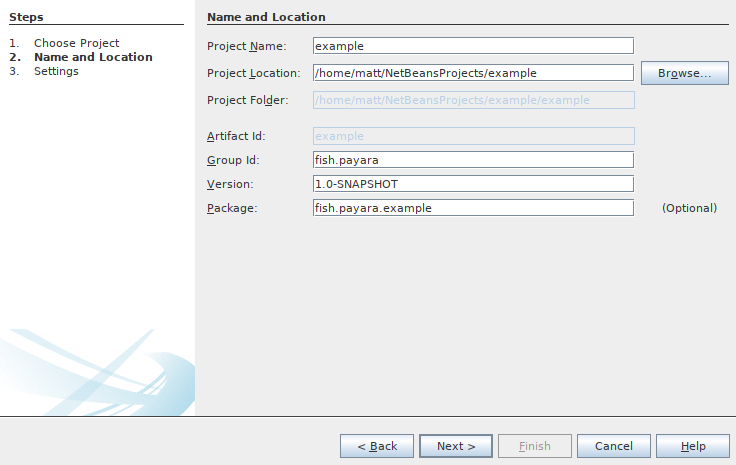
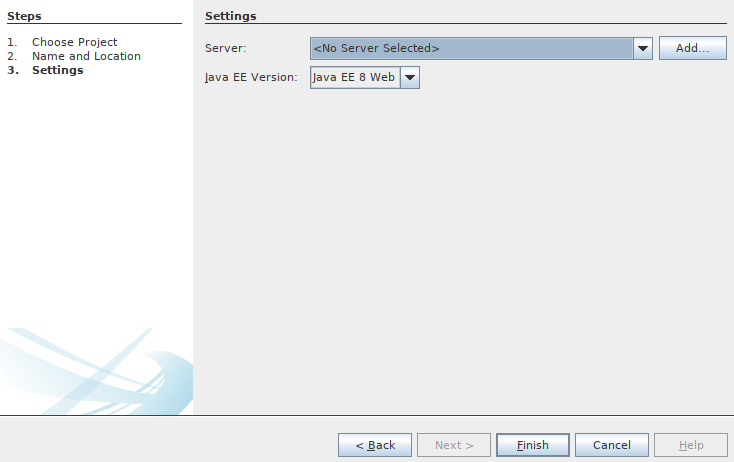
Since NetBeans 11.1 the Payara Server plugins are installed by default. If the plugins are already installed, you can skip to the next section, otherwise this section will demonstrate how to install the plugins.
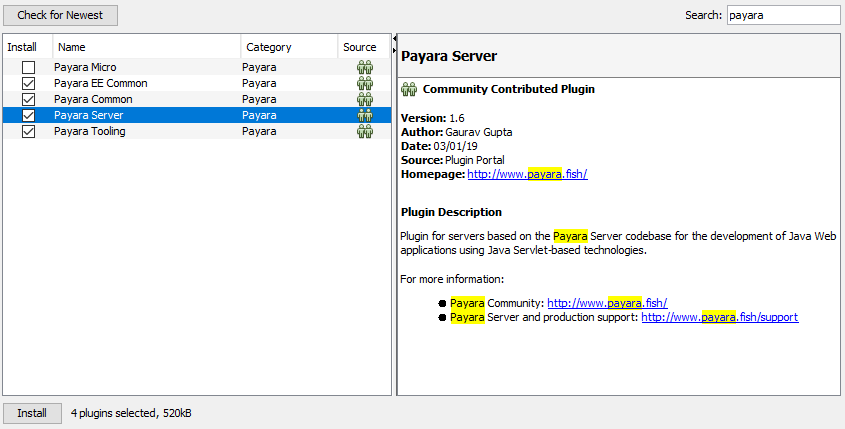
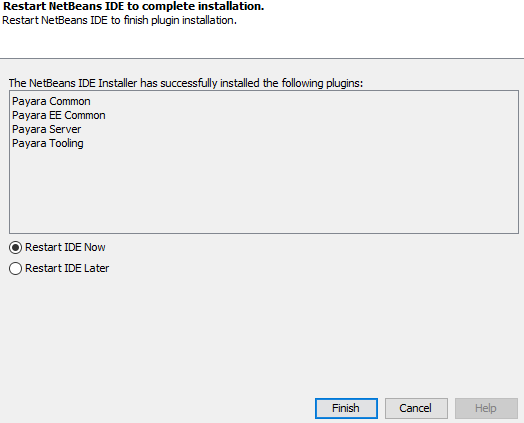
Now that you’ve got your project set up and the plugins installed, you need to setup Payara Server in NetBeans.
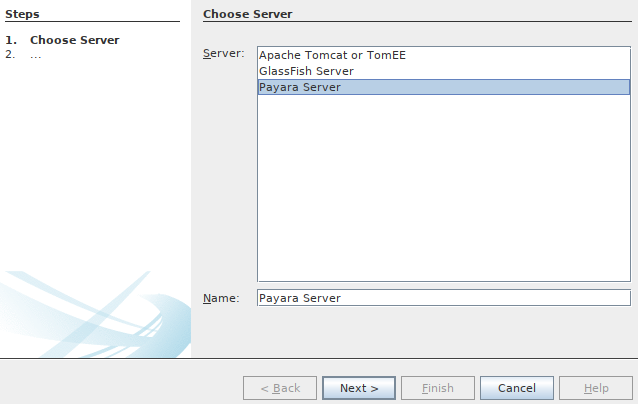
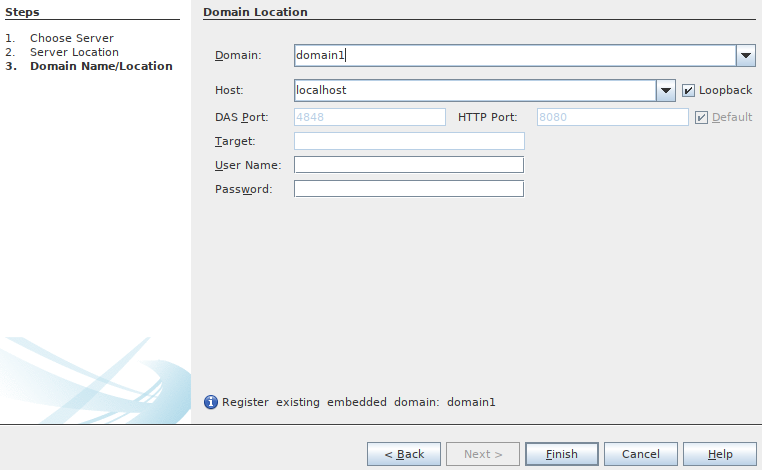
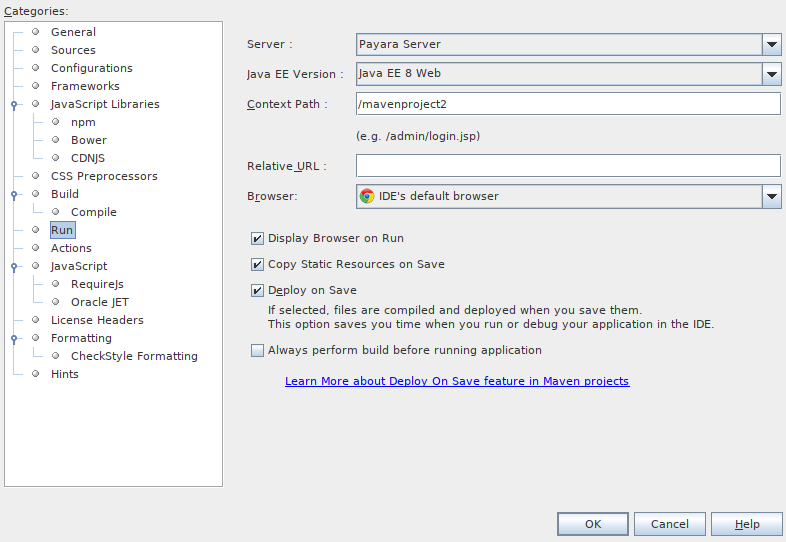
After exiting this window, right click your test project and select Run (or click the green ‘Run’ arrow at the top of the window). The server will start up and you should eventually be greeted with a ‘Hello World!’ message in your browser.

To stop the server, switch to the server log at the bottom of the window under Output → ‘server name’. Click the stop sign in this window.
Instead of clicking Run from the right click menu or the top of the NetBeans window, you can instead click Debug from similar locations to automatically run the program and attach the debugger to Payara Server.
That’s how to use the Payara Server NetBeans plugin! With a web application in NetBeans setup in this fashion you can deploy, undeploy and debug your application, amongst other things, and all from the NetBeans IDE.
{{cta(‘b515e79e-d13e-489f-8bc0-230da7e083c5’)}}
 3 minutes
3 minutes
The December 2025 releases bring targeted improvements and security updates across Payara Platform Enterprise versions 5.82.0 and 6.33.0 as […]
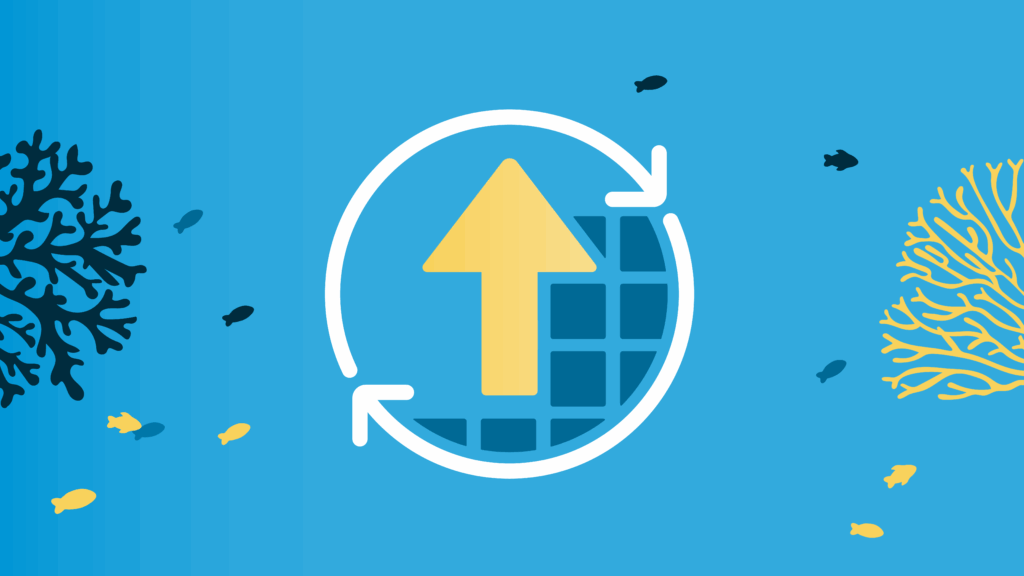 4 minutes
4 minutes
With the November 2025 release, Payara community reached an important milestone. Payara Platform Community 6 received its final update […]
 5 minutes
5 minutes
At Devoxx Belgium 2025, I was able to talk about what happens after you build your container. In theory, […]
This is like most of your blogs INCOMPLETE there has to be some steps missing because there is no way to follow along and have it work…A person can go up to selecting glassfish but from there on NO WORKEE
Hi Larry,
What part of the blog are you struggling with? It looks like all the necessary steps are there for me. Are you using the right version of NetBeans?
Thanks,
Mike
What version of netbeans is needed there to do the exact you’re listed for adding payara server in netbeans?
You should mention the ide’s version as it matters 🙂
Hi Nazmul,
Thank you for your comment. I’m using NetBeans 8.2, and I’ve updated the first paragraph of the blog to reflect this. As I’m aware NetBeans used to have a bug where it wouldn’t recognise Payara Server as a valid server, and the fix was as you mentioned below. Thankfully this has been fixed now, although I couldn’t find the exact version this fix happened. Because of this I would highly suggest using the latest version of NetBeans when integrating Payara Server; it makes things easier!
Thanks,
Matt
Hello Larry
Change the name console-core-4.1.1.jar to (path unzipped_payara_directory/glassfish/lib/install/applications/__admingui/WEB-INF/lib) console-core-4.1.jar
I thought bog was very good…I would like to see one thing added and, that is all of the ports payara41 uses
I thought the blog was very good but needs one thing, IMOP, and that is all of the ports payara41 uses
I thought bog was very good…I would like to see one thing added and, that is all of the ports payara41 uses Yes and I figured out how to get it done…I will write back later today and tell you the missing steps…I do thank you and all there for what you all do May God Bless all of you and my best wishes
I thought the blog was very good but needs one thing, IMOP, and that is all of the ports payara41 uses
Hi Larry,
I’m glad you’ve got it working now. Did you update NetBeans or rename the console-core.jar? Unless they’re manually changed, the ports used by Payara should be automatically filled into the fields by NetBeans.
Thanks,
Matt
How do you use the maven pom.xml dependency for this? Can you avoid the manual download if you set it up in maven?
Hi Ken,
In this project I just downloaded a Maven archetype from NetBeans to keep things simple. If you want to use a different project, then you can create it manually and import it into NetBeans. For a simple test project without archetypes, try this tutorial: http://blog.payara.fish/create-a-restful-web-service-with-payara-server-netbeans.
I hope this helps.
Matt
is there any specific extra feature that the payara Plugins provide when compared to the standard glass fish plugins included in netbeans?
With Payara plugin, developer can install and connect the latest version of Payara Server (e.g Payara Server 5.0.0.173-SNAPSHOT etc) and developer can also configure the SQL trace listener, log JDBC call, SQL query log threshold etc.
I had been successfully using the Payara NetBeans 1.0 plugin with NetBeans 8.2. But today I just noticed there was an update to version 1.1. After installing that the server no longer recognises my remote payara domain.
Is there a problem with the new version of the plugin?
Hi Allen,
Thanks for reporting the issue, Can you please share the screenshot of error, check the server.log for any exception wire trace and steps to reproduce the issue.
This steps don’t work for Netbean 8.0.2. Is there a way around it or must I download Netbeans 8.2 ?
Thanks in advance of your response.
Hi Gabriel,
Payara Server plugin is only available for NetBeans IDE v8.1 & v8.2.
I would highly recommend you to use the latest NetBeans IDE v8.2.
Thanks,
Gaurav Gupta
While deploying the project then it says “/home/fahim/Payara_Server/glassfish/domains/payaradomain/autodeploy/bundles does not exist, please create it.”
then it does not do anything. I am using “Payara Server 5.0.0.173-SNAPSHOT” version.
Thanks.
Hi Fahim, Unfortunately I can’t reproduce this with the latest Payara 5 Snapshot build. If you could raise this as an issue on our GitHub (https://github.com/payara/Payara/issues), we could address this more thoroughly. Kind regards, Matt
How do I get Payara to show up in NetBeans IDE 8.2 as an available plug in? I have unzipped the download to C:payara-5.182. The add plug ins window is looking for a .nbm file but one does not exist in the download. So basically nothing in this blog is working for me.
Hi Paul,
You may download the nbm files from here : http://plugins.netbeans.org/plugin/72263/payara-server
** NetBeans plugins are not available in Payara Server folder.
I’m on Windows 10 and Netbeans 8.2 and for some reason Payara didn’t show up in the list of available plugins (or under updated or installed for that matter). As a workaround I downloaded it manually from http://plugins.netbeans.org/plugin/72263/payara-server, unpacked the archive and registered the plugins in Netbeans under the “Downloaded” tab of Tools -> Plugins.
I vaguely remember trying an older version of this plugin some time ago so there could be something with my environment preventing Payara from showing up.
Hi Erik,
It seems that Netbeans removed the Payara plugin from the marketplace. You can still install it manually – download it from http://plugins.netbeans.org/plugin/72263/payara-server. It’s not bundled with Payara Server so you need to download it separately from the netbeans web page.
Hi Erik,
You can also add our Update Center to Netbeans until Payara plugins are available in the main Netbeans Update Center. So before searching for Payara plugins, do the following:
1. On the Plugins window, switch to the Settings tab.
2.. On the Settings tab, click *Add* button and the *Update Center Customizer* dialog box appears.
3.. In the Name field, enter *Payara Update Center*.
4. In the URL field, enter *https://github.com/payara/ecosystem-netbeans-plugin/releases/download/NB_8.2/updates.xml* and Click *OK* button.
We’ve now published updated documentation of installing and using Payara Netbeans plugins: https://docs.payara.fish/documentation/ecosystem/netbeans-plugin/
This guide is failing to work for myself, the Payara server fails to start meaning the project fails to connect when run. All plugins are installed, up to date and enabled.
Hi Chris,
I would suggest raising an issue on our Github or the Payara Google Forum. Make sure to post the error you’re getting.
Kind regards,
Matt
Apparently you need NetBeans 8.2 (which I had to find out reading the comments). Any way to get Payara 4.2.x working with NB 9.0 and JDK 10+? Or is this not at all possible?
Hi Jasper,
I’ve added a comment to the blog mentioning this requirement. Unfortunately, Payara does not currently have JDK 10 support, although we hope to do so at some point in the future. The plugin does however work with NetBeans 9. To get it working, refer to our documentation: https://docs.payara.fish/documentation/ecosystem/netbeans-plugin/. You’ll need need to add our update center to install it.
Kind regards,
Matt
I added payara server 5.193 to Netbeans 8.2 and when I tried to run a test web application the server did not start due to this error : Could not restart server Payara Server: Could not initialize server state listener
C:UsersjudeDocumentsNetbeansProjectsTestingnbprojectbuild-impl.xml:1045: The module has not been deployed.
See the server log for details aiso below:
Error: Could not find or load main class Filespayara5glassfish.lib.grizzly-npn-bootstrap-1.6.jar
Hi Jude,
This could potentially be a problem with the NB plugin, but I’d need more information to know for sure. Can you raise this either on our forum https://groups.google.com/forum/#!forum/payara-forum or our GitHub https://github.com/payara/Payara/, and post it with some information from the server log and reproducer steps?
Kind regards,
Matt
I am using a remote payara server but I am having trouble getting netbeans to connect to it. It seems to find it but when I try to debug, it says ‘The target server does not support debugging’ – now what ? Your help would be greatly appreciated. Thanks.
Hi David,
Firstly, have you made sure that debugging is enabled on the Payara Server instance and that the host is right in NetBeans? If you’re still having problems, please raise an issue on our GitHub and we’ll be able to assist you.
Best regards,
Matthew